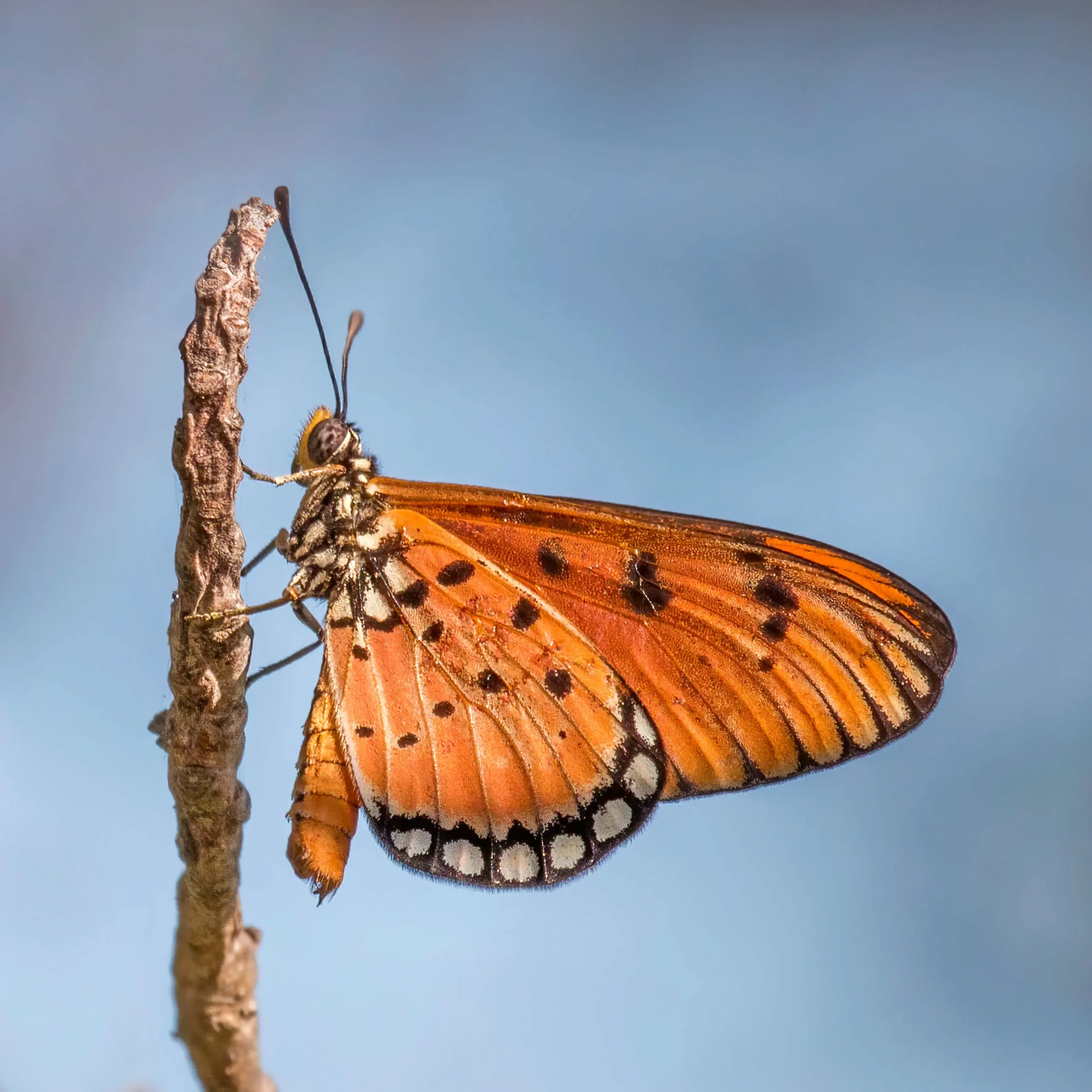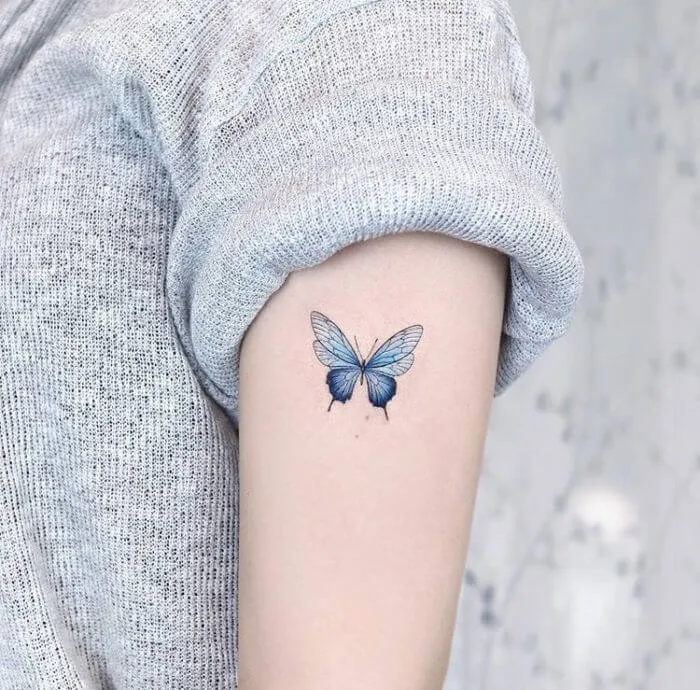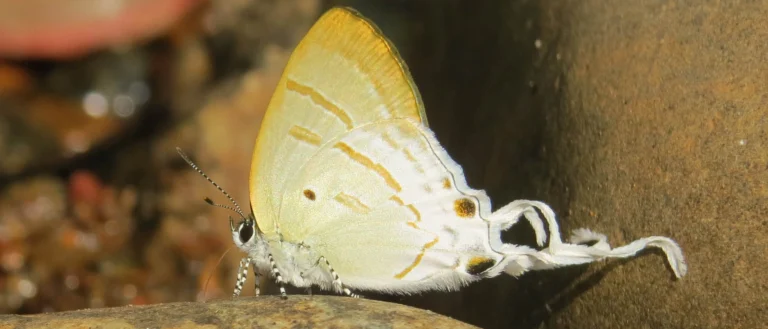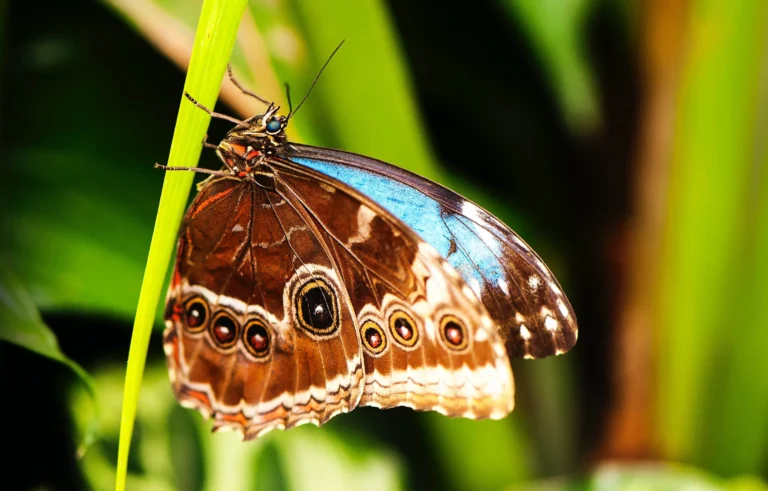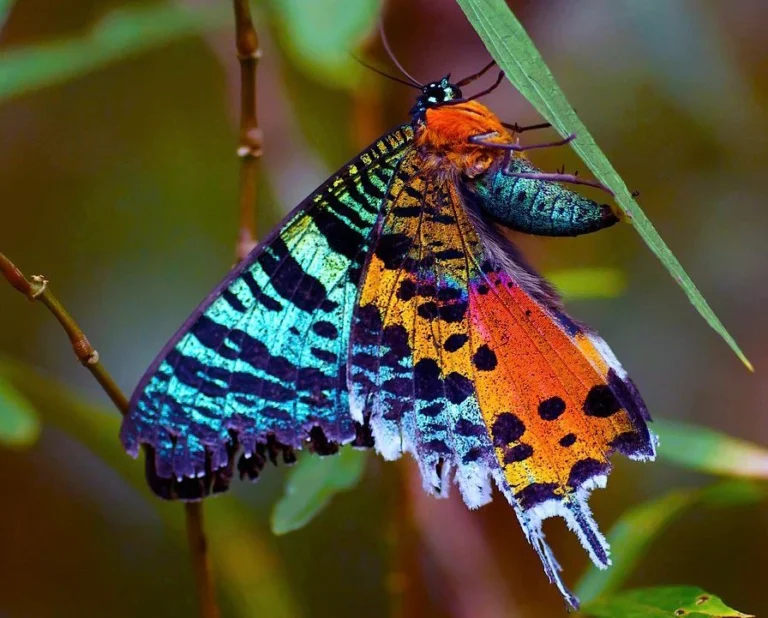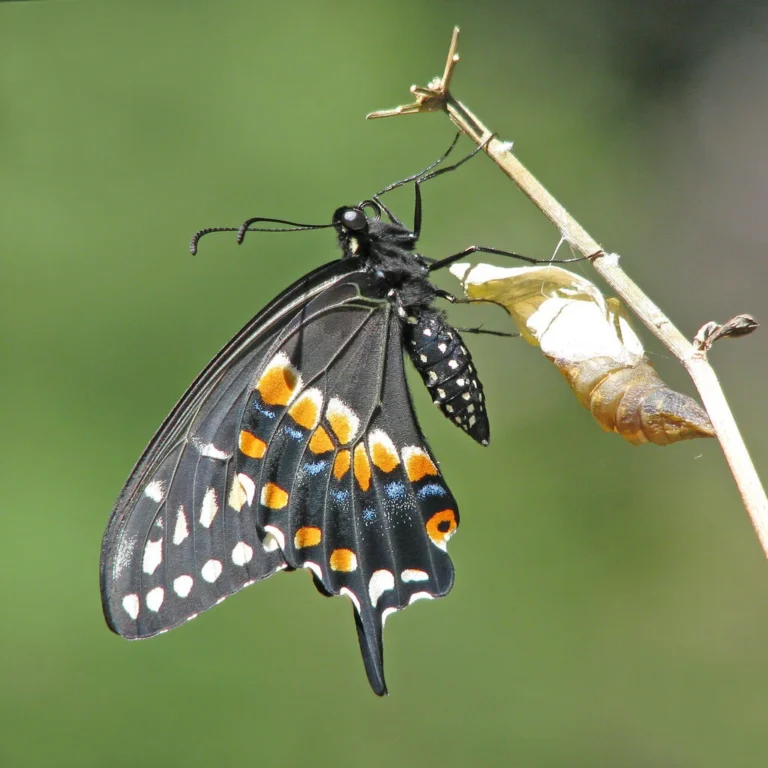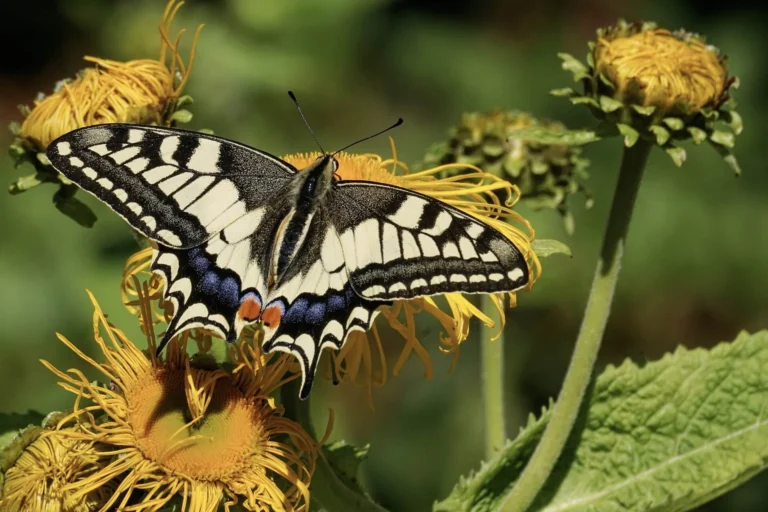Acraea Terpsicore (Tawny Costers) Butterfly: Complete GuideLife
The Acraea Terpsicore, commonly known as the Tawny Coster, is a vibrant orange and black butterfly with a wingspan of 53 to 64 mm. Native to parts of Asia, it thrives in warm, humid environments and is often found in gardens and forests. Playing a crucial role in pollination, particularly favoring milkweed and lantana plants, the Tawny Coster contributes to the ecosystem’s health. The butterfly has a fascinating life cycle, transforming from a tiny, pale-yellow egg into an eye-catching adult. Unlike some other butterfly species, it displays modest flight speeds and has a unique, fluttery flight pattern.
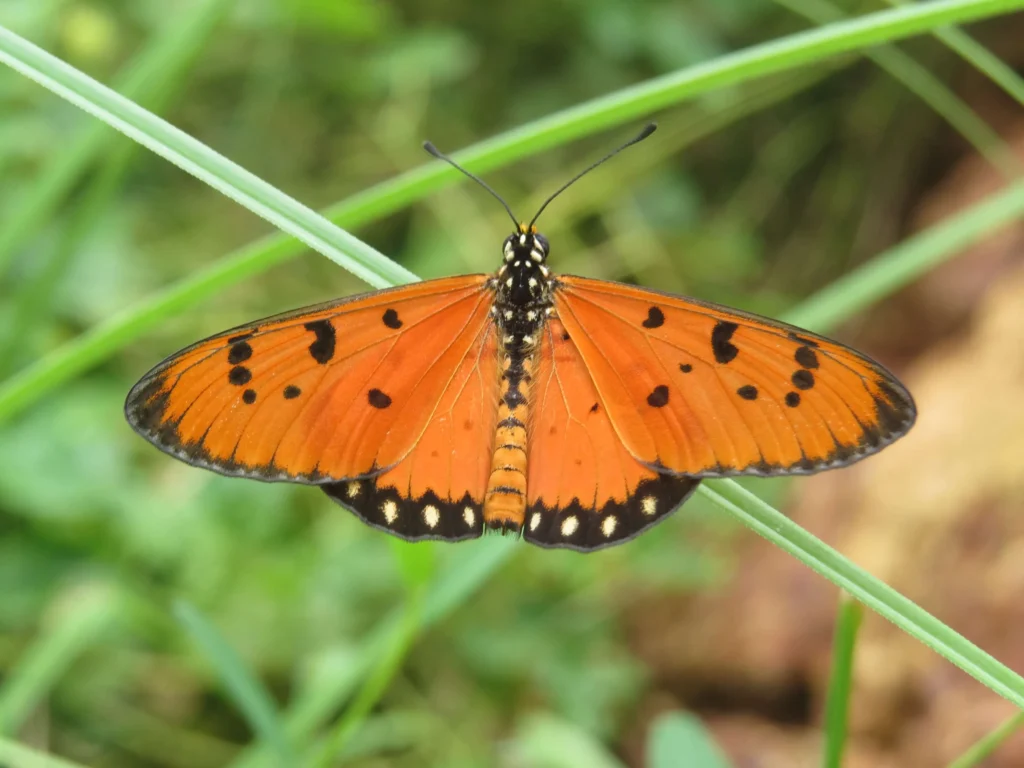
Table of Contents
Introduction to Acraea Terpsicore/Tawny Coster
Today, we’re talking about a special butterfly known as Acraea Terpsicore, but many people call it the Tawny Coster. This butterfly is not just pretty; it plays a key role in nature too!
Importance in Ecosystems
You see, the Acraea Terpsicore is a pollinator. This means it helps plants by moving pollen from one flower to another. So, it helps plants grow and produce the fruits and seeds they need. Just imagine a world without these helpful butterflies—it wouldn’t be as colorful or full of life.
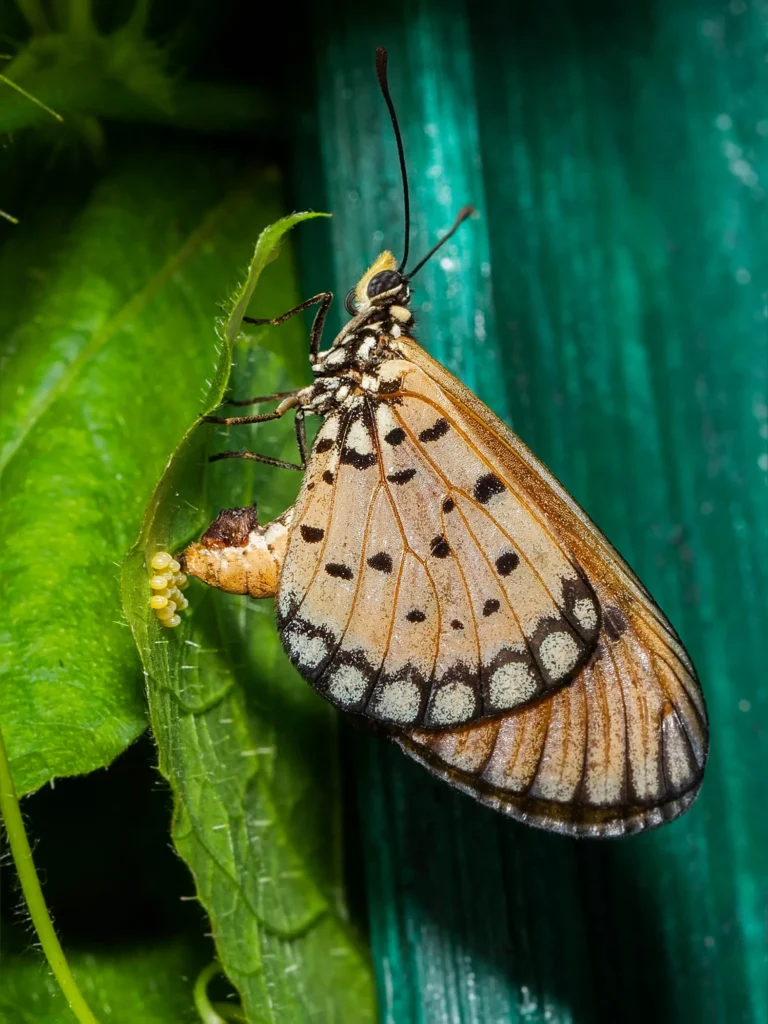
Aim and Scope of the Article
In this article, we’re going to explore all things Tawny Coster. We’ll learn how to identify it, where it lives, and even look at its whole life cycle. This is the perfect read for nature lovers, students, and anyone curious about this amazing butterfly.
Brief Summary of Topics Covered
We’re going to cover a lot, so hang tight! First, we’ll learn how scientists classify this butterfly. Then, we’ll look into its natural habitat and the ways it might look different based on where it lives.
We’ll go deep into its life from being an egg to becoming a beautiful adult butterfly. We’ll also find out what it likes to eat, how it behaves, and why it’s so important for our environment.
Classification and Identification
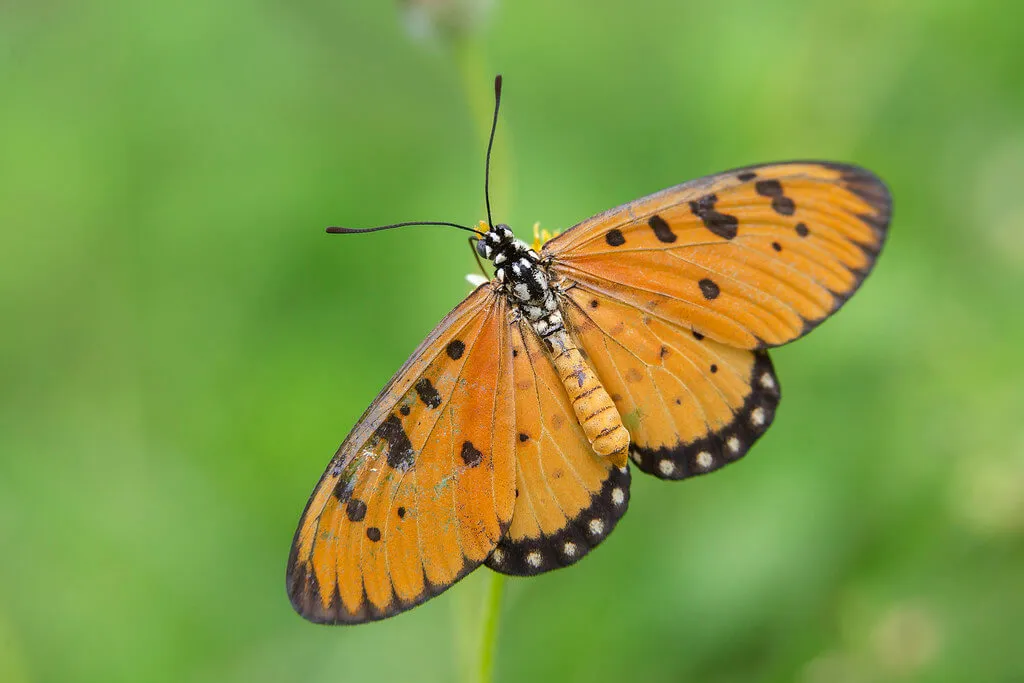
Taxonomy
When it comes to classifying living things, scientists use a system called taxonomy. In this system, the Acraea Terpsicore belongs to the animal kingdom. It’s further sorted into the class of insects. And guess what? It’s part of the butterfly and moth order, known as Lepidoptera. So, the full classification looks like this:
- Kingdom: Animal
- Phylum: Arthropoda
- Class: Insecta
- Order: Lepidoptera
- Family: Nymphalidae
- Genus: Acraea
- Species: Terpsicore
Physical Characteristics
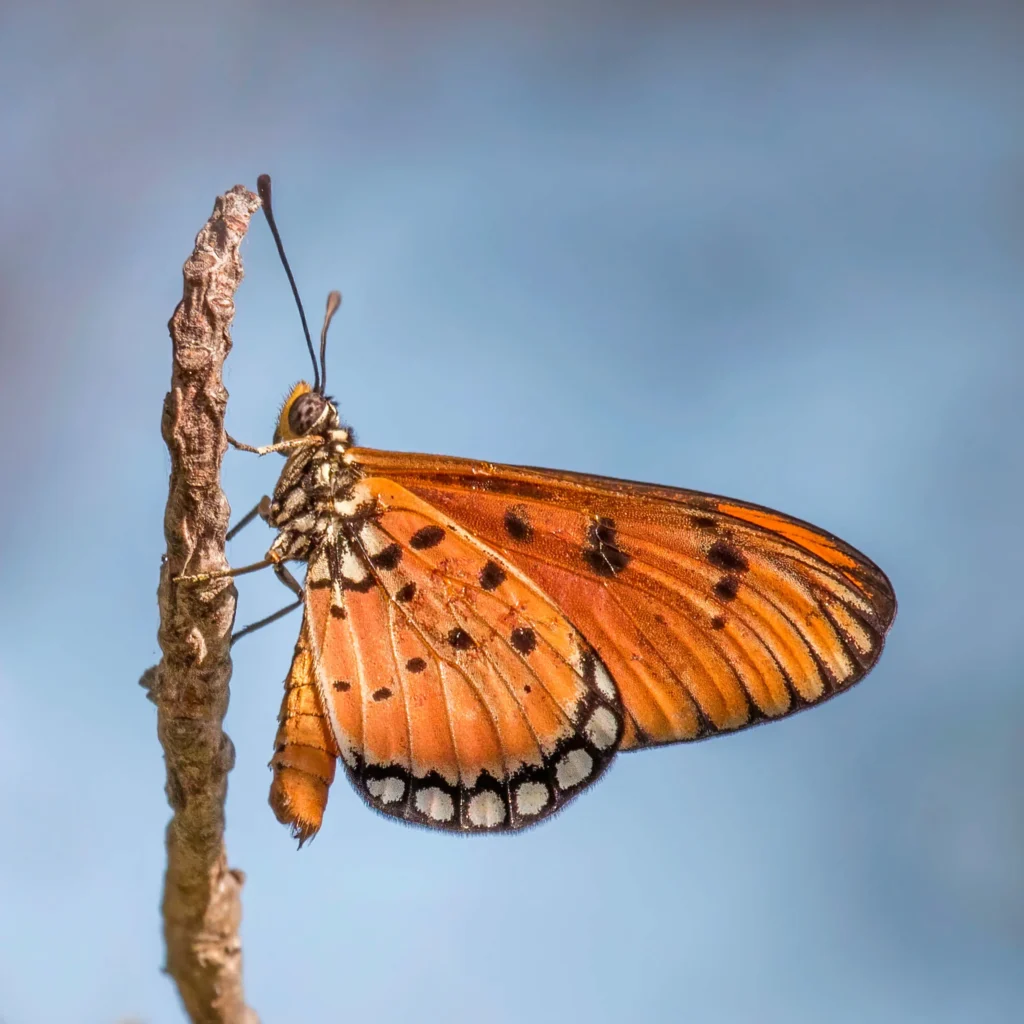
So, how can you spot an Acraea Terpsicore in the wild? They usually have a wingspan of about 53 to 64 mm.
That’s about the length of your little finger to your index finger if you stretch it out! They are mainly orange with some black spots and markings.
But don’t mix them up with the Monarch or the Painted Lady butterflies—they look a bit similar but are different species.
Behavioral Characteristics
Tawny Costers are quite easy to spot because they fly low and slow. Unlike some other butterflies that zip around super fast, Tawny Costers take their time, which is great for anyone who wants to take a closer look or maybe even snap a photo.
Identification Tips
The best times to see Acraea Terpsicore are on warm, sunny days. Early morning or late afternoon is usually when they’re most active.
If you’re serious about spotting one, you might want to use field guides or apps that can help you identify different types of butterflies.
Where Does the Acraea Terpsicore Live? (Natural Habitat)
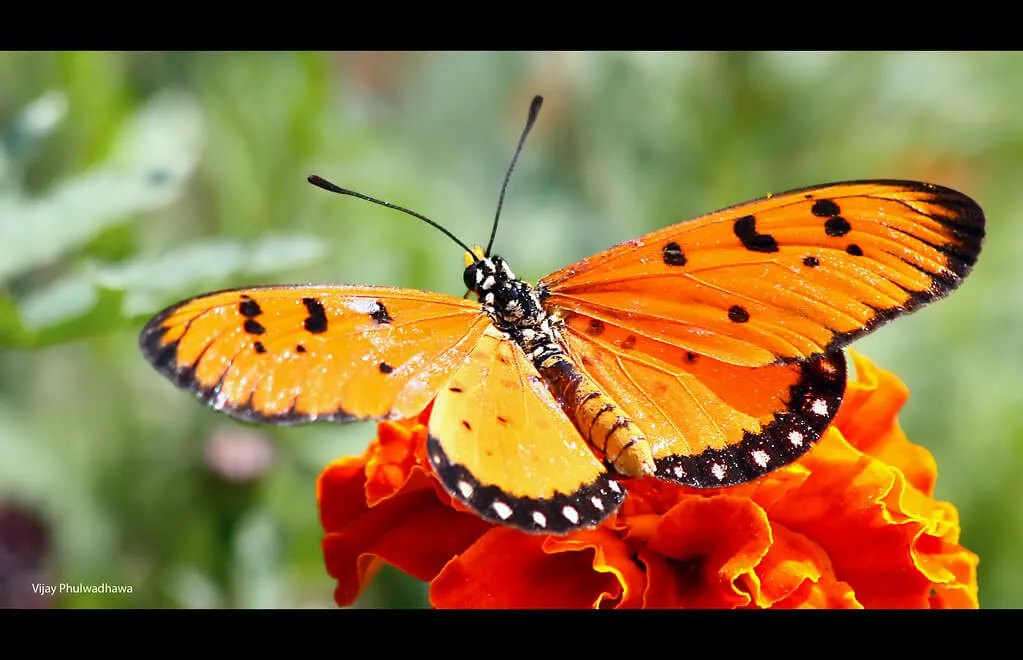
Places You Can Find Them (Geographical Distribution)
The Tawny Coster can be found in many parts of Asia, such as India, Sri Lanka, and even some parts of Southeast Asia. If you were to look at a map, you’d find them living in areas that are warm and have lots of plants.
Local and Global Habitats
Locally, you might spot them in gardens, fields, and forested areas. They’re not picky; as long as there are flowers for them to feed on and leaves for their caterpillars to munch, they’re happy. On a global scale, they’re mostly found in tropical and subtropical areas.
They like to lay their eggs on the underside of leaves, a habit that is somewhat different from that of Monarch Butterfly eggs.
Preferred Environmental Conditions
Tawny Costers love warm, humid places. They’re not big fans of the cold. You’ll often find them in lowlands rather than high, chilly mountain areas. A temperature range between 75°F to 95°F (24°C to 35°C) is ideal for them.
How Do They Adapt? (Observed Adaptations)
One cool thing about Acraea Terpsicore is how well they fit into different kinds of places. For example, they can live in urban gardens just as easily as wild forests. This makes them very adaptable and shows how well they can fit into different ecosystems.
Do They Move Around? (Seasonal Behavior and Migration)
Tawny Costers are mostly residents, which means they don’t travel long distances like some birds do. But, they might move to different areas within their range based on the season. During hot summers, you might find them in cooler, shaded areas, and in wet seasons, they might look for drier spots.
How Do They Look Different? (Morphological Variations)

Variations in Size and Color Across Populations
Did you know that not all Acraea Terpsicore look exactly the same? That’s right! While most of them have orange wings with black spots, some may have deeper or lighter shades of orange. Also, the size can slightly vary, depending on where they live and the conditions there.
Effect of Environmental Factors on These Variations
You might wonder, why these butterflies look a bit different from one place to another. Well, things like the type of food they eat, the temperature, and even the amount of sunlight they get can affect how they look.
For example, Tawny Costers who live in areas with lots of bright, direct sunlight might have darker colors. This is nature’s way to help them blend in and protect them from predators.
Region-Specific Morphological Characteristics
In some regions, you might notice that Acraea Terpsicore are a bit larger or smaller. This can happen because of the availability of food or because of how many predators are in that area.
Sometimes, being smaller might help them hide better while being larger might help them fly longer distances to find food.
Relevance of These Variations
So, why does all of this matter? These small changes help the Tawny Coster survive in different places. Whether it’s a change in color to blend in better or a change in size to escape predators, these variations are what make this species so interesting and adaptable.
Acraea Terpsicore’s Journey from Egg to Butterfly (Life Cycle)
Eggs
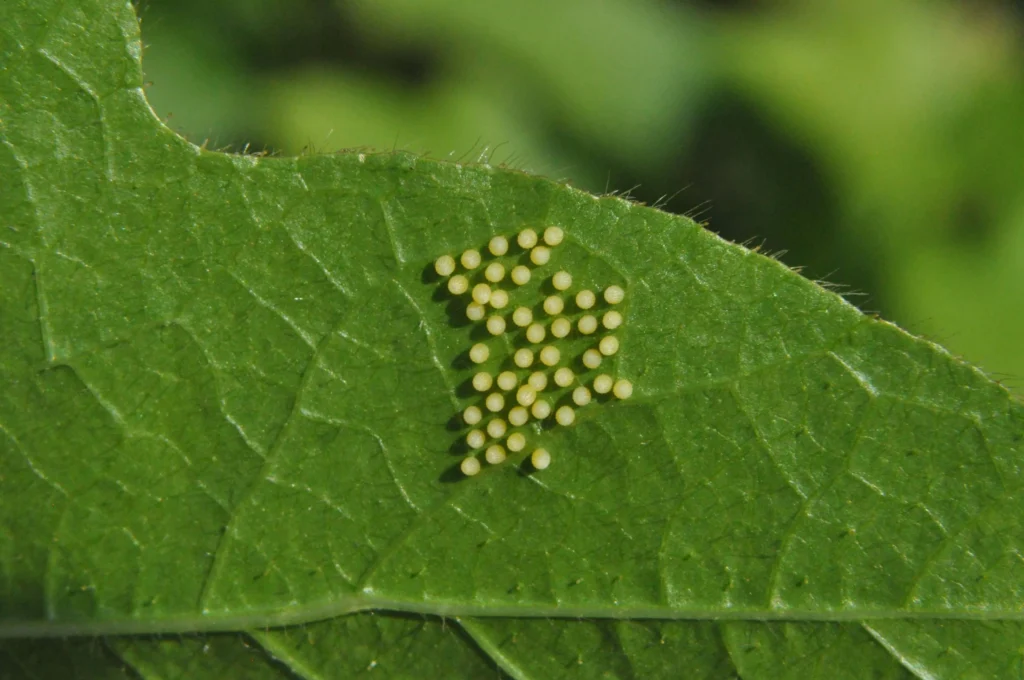
- Shape: These eggs are round and a bit flat.
- Size: They’re super small, about as big as a pinhead.
- Color: Usually pale yellow at first, they may turn darker as they near hatching. These are quite similar in some ways to Luna Moth eggs.
- Where Laid: Typically on the underside of leaves to avoid predators.
- Time to Hatch: Expect to see them hatch into larvae in about 3 to 5 days.
Larvae
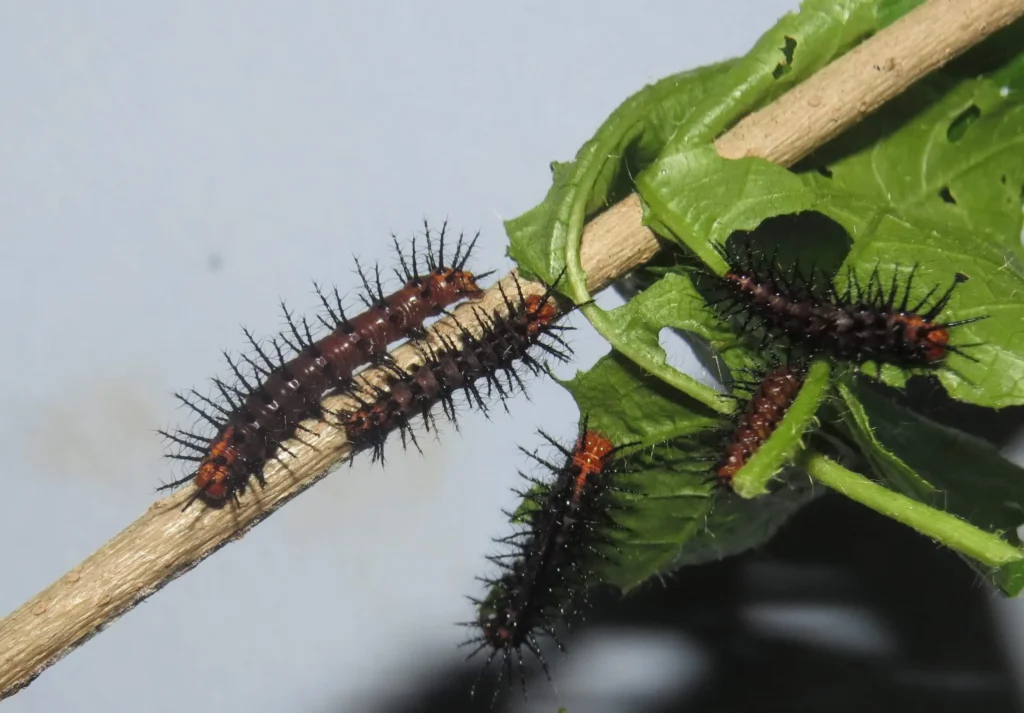
- Physical Look: Once hatched, larvae are tiny with a soft, segmented body.
- Shape: They are elongated and tube-like.
- Size: They grow to around 1.5 inches (about 4 cm) as they eat.
- Color: Starts off pale and turns darker with age.
- Eating Habits: These little guys love to eat leaves.
- Behavior: Mostly, they eat and grow during this stage.
- Stage Length: Lasts about 14 to 16 days before turning into pupae.
Pupae

- Physical Look: Becomes a pupa, which is like a case where transformation happens.
- Shape: More oval-shaped and usually hangs from leaves.
- Size: Similar in size to the fully-grown larva.
- Color: Starts green but turns brown as the butterfly develops.
- Behavior: Doesn’t move, just hangs until it turns into a butterfly.
- Where It Happens: Usually picks a quiet, hidden place.
- Stage Length: This stage goes on for about 7 to 10 days.
Adult Butterfly
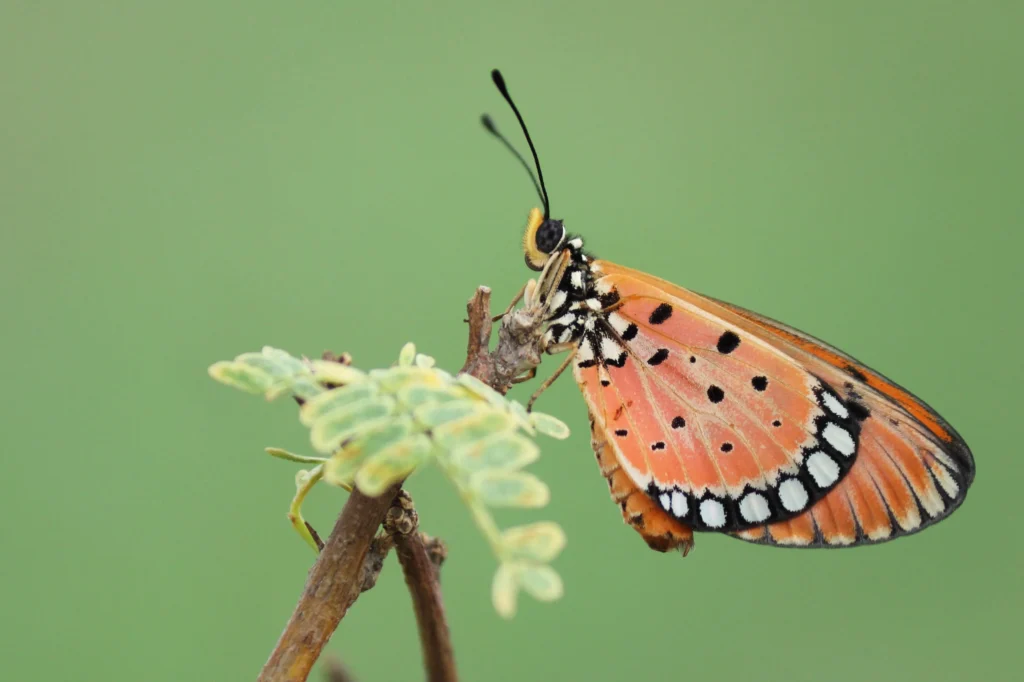
- Physical Look: Finally, the butterfly is here with wings ready to go!
- Wingspan: Ranges between 53 to 64 mm.
- Colors: Orange and black with unique patterns.
- Males vs. Females: Males are usually a bit smaller, which is quite different from the notable differences between male and female Monarch Butterflies.
- Eating Habits: Adults mainly sip nectar from flowers.
- Mating: Has a simple mating ritual.
- Lifespan: Adults usually live for about 3 to 4 weeks, depending on conditions.
Behavior and Diet

General Feeding Habits
Types of Plants They Prefer
When it comes to food, Tawny Costers are a bit picky. They love the nectar from flowering plants. Some of their favorites are the flowers of the milkweed and lantana plants.
Times of Day When They Are Most Active for Feeding
Acraea Terpsicore are usually most active during the early morning and late afternoon. That’s when they go out to find food. So, if you’re looking to spot one, those are the best times!
Flight Patterns
Average Flight Speed and Style
You won’t see Tawny Costers zipping around like some other butterflies. They like to take it slow. Their flight speed is moderate, which makes it easy to watch them and see their beautiful colors.
Unique Maneuvers, If Any
While they don’t perform complex aerial maneuvers, Tawny Costers do have a unique, fluttery style of flying. It’s like they’re dancing in the air!
Predator-Prey Interactions
Natural Predators of Acraea Terpsicore
Every creature has some natural enemies, and the Tawny Coster is no exception. Birds, spiders, and even some larger insects can pose a threat to them.
Strategies Employed to Escape or Deter Predators
Unlike Monarch Butterflies, which are known to be poisonous to some predators, Tawny Costers rely more on camouflage and flight patterns for survival.
Tawny Costers have a few tricks up their sleeves to escape danger. Their slow, fluttery flight is a way to evade predators. This is a different survival strategy from the Monarch Butterfly, which is actually poisonous to some predators. Their bright colors often signal that they might not be a tasty meal, which keeps some predators away.
Unique Adaptations for Capturing or Consuming Prey
Tawny Costers don’t capture prey since they mainly feed on plant nectar. But they do have a specialized mouthpart called a proboscis, which works like a straw to help them drink nectar from flowers.
Why Are They Important for Nature? (Ecological Importance)
Role in Pollination
Specific Plants They Interact With
Tawny Costers are not just beautiful to look at; they also do a lot of good for nature. These butterflies help pollinate various plants. When they go from flower to flower to drink nectar, they carry pollen with them. Plants like milkweed and lantana are especially thankful for their help!
Effects of Their Feeding Habits on Plant Health and Growth
The feeding habits of Tawny Costers can actually help plants grow. When they drink nectar, they don’t harm the flowers. In fact, they help the plants by spreading pollen, which helps more plants grow.
Contribution to Bio-Indicators, If Applicable
Sometimes, the presence of certain creatures can tell us about the health of an environment. While Tawny Costers aren’t officially used as bio-indicators, their presence often signals a balanced, healthy ecosystem. That’s because they need clean air and a variety of plants to thrive.
Quick FAQs
What is the common name for Acraea Terpsicore?
The common name for Acraea Terpsicore is the Tawny Coster.
What is the host plant of Acraea Terpsicore?
The host plants for the Tawny Coster are usually species of the Passifloraceae family, such as the passionflower.
What are the characteristics of a Tawny Coster?
The Tawny Coster is an orange butterfly with black spots and markings. It has a wingspan ranging from 53 to 64 mm and is known for its slow, fluttery flight.a
Conclusion
What Makes Them Unique (Summary of Key Features)
We’ve learned a lot about the Tawny Coster, haven’t we? From its unique orange and black wings to its slow, fluttery flight, this butterfly is really something special. And let’s not forget how it helps out plants by pollinating them.
Reiteration of Its Ecological Importance
It’s clear that the Tawny Coster plays an important role in nature. By helping to pollinate plants, it helps whole ecosystems thrive. So, the next time you see one, remember it’s not just a pretty sight; it’s also doing important work!
Personal Reflections on the Joy and Scientific Value of Studying This Species
Studying the Tawny Coster has been a joy. Not just because it’s beautiful, but also because it teaches us so much about nature. It’s a wonderful example of how every creature, big or small, plays a role in the world around us.
Want to learn more about butterflies like the Tawny Coster? Why not spend some time in nature observing them? Or, if you want to get more involved, look into citizen science projects that study butterflies.
Your observations could help scientists learn even more about these amazing creatures.


